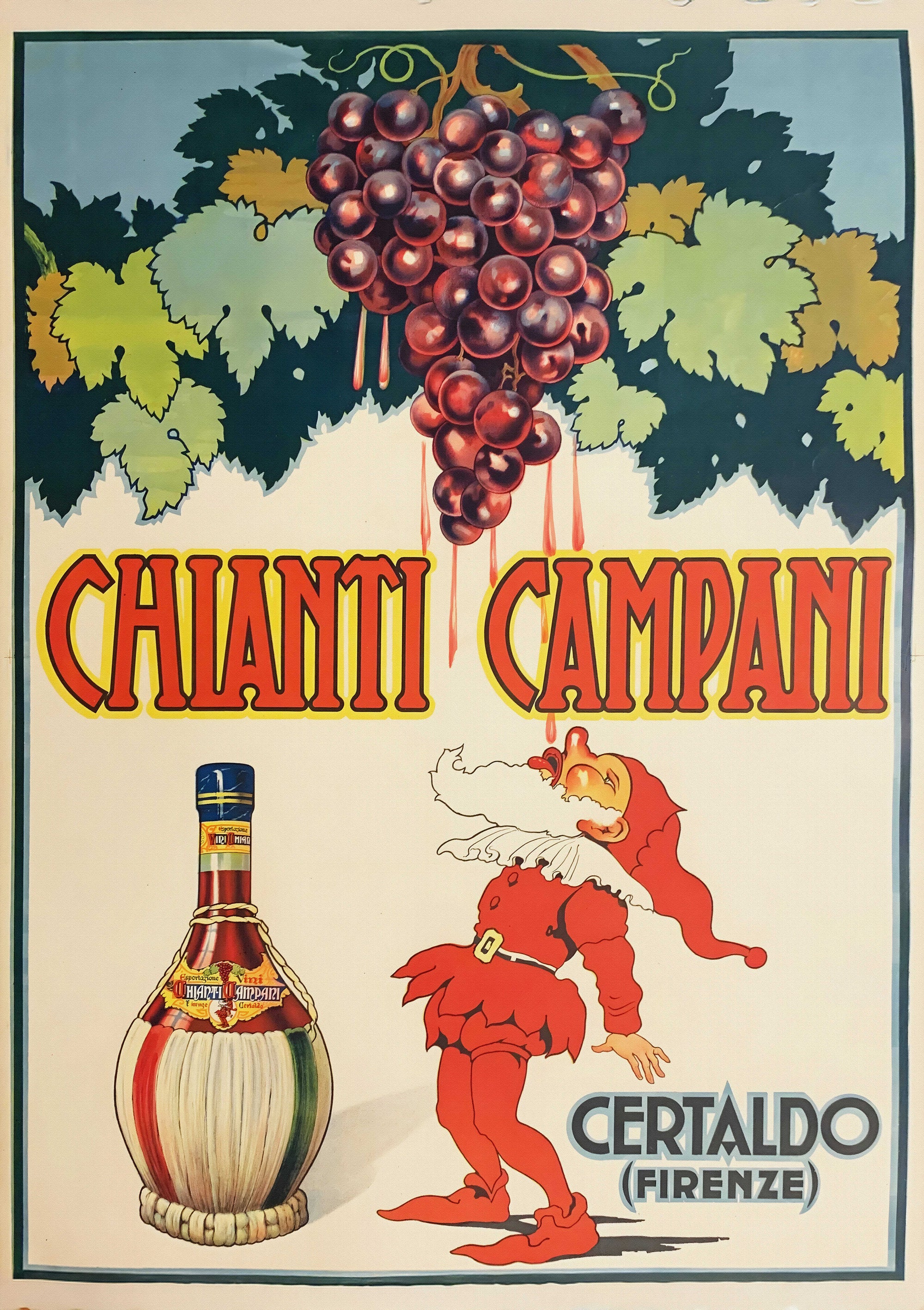Cappiello's Deco Delight: Chianti Campani and the Spirit of the Twenties
Leonetto Cappiello's advertisement for Chianti Campani embodies the spirit of 1920s Italy. A master of poster design, Cappiello showcases Art Deco's impact on commercial art through bold imagery and simplified forms. This vintage print offers a glimpse into a vibrant era.

Leonetto Cappiello's advertisement for Chianti Campani embodies the spirit of 1920s Italy. A master of poster design, Cappiello showcases Art Deco's impact on commercial art through bold imagery and simplified forms. This vintage print offers a glimpse into a vibrant era.
Chianti Campani by Leonetto Cappiello: A Toast to Art Deco Italy
Leonetto Cappiello, a name synonymous with the golden age of poster design, transports us to the sun-drenched vineyards of Italy with his captivating advertisement for Chianti Campani. This vibrant piece, dating back to the 1920s, is a quintessential example of Art Deco's influence on commercial art, showcasing Cappiello's mastery of bold imagery and simplified forms.
The Roaring Twenties in a Glass
The 1920s, often referred to as the Roaring Twenties, was a period of unprecedented social and cultural change. Following the devastation of World War I, a spirit of optimism and exuberance swept across Europe and America. This era saw the rise of jazz music, flapper fashion, and a general loosening of social constraints. Advertising, too, underwent a transformation, moving away from the ornate and detailed styles of the Art Nouveau era towards a more streamlined and impactful aesthetic. Cappiello was at the forefront of this revolution, pioneering a style that prioritized visual punch and immediate recognition.
Italy, in particular, experienced a period of significant artistic and cultural ferment during this time. The Futurist movement, with its emphasis on speed, technology, and the dynamism of modern life, had a profound influence on Italian art and design. While Cappiello's work doesn't explicitly align with Futurism, it shares a similar spirit of innovation and a rejection of traditional artistic conventions. The Chianti Campani poster, with its bold colors and simplified forms, embodies this spirit of modernity and forward-thinking design.
Art Deco's Bold Embrace
The Art Deco style, characterized by its geometric shapes, stylized ornamentation, and luxurious materials, is readily apparent in the Chianti Campani poster. Cappiello eschews the flowing lines and intricate details of Art Nouveau in favor of a more streamlined and impactful design. The figure in the poster is rendered in bold, simplified forms, with strong contrasts between light and shadow. The color palette is equally striking, dominated by vibrant reds and blacks, which immediately draw the viewer's eye. This simplification of form and color is a hallmark of Art Deco, reflecting a desire for clarity and visual impact in a rapidly changing world.
The typography used in the poster also reflects the Art Deco aesthetic. The lettering is clean, geometric, and sans-serif, conveying a sense of modernity and efficiency. The placement of the text is carefully considered, complementing the overall composition and ensuring that the message is easily legible. The combination of bold imagery and modern typography makes the Chianti Campani poster a powerful and effective advertisement.
The Art of Stone Lithography
The vibrant colors and crisp lines of the Chianti Campani poster are a testament to the skill of the printer and the capabilities of stone lithography, the printing technique most likely used to create it. Stone lithography, a process developed in the late 18th century, involves drawing an image onto a smooth limestone slab with a greasy crayon or ink. The stone is then treated with chemicals that allow the inked areas to repel water and the non-inked areas to attract it. When the stone is inked and pressed against paper, the image is transferred, creating a print.
Stone lithography allowed for the creation of posters with rich, saturated colors and fine details, making it a popular choice for advertising during the early 20th century. The process was labor-intensive and required skilled artisans, but the results were often stunning. Cappiello's posters, in particular, benefited from the capabilities of stone lithography, allowing him to achieve the bold colors and crisp lines that define his signature style. The Chianti Campani poster is a prime example of the artistry and craftsmanship involved in this printing technique.
Leonetto Cappiello: The Father of Modern Advertising
Leonetto Cappiello (1875-1942) is widely regarded as one of the most influential poster artists of the early 20th century. Born in Livorno, Italy, Cappiello moved to Paris in 1898, where he quickly established himself as a leading figure in the world of advertising. He broke away from the prevailing Art Nouveau style, which he considered too cluttered and fussy, and developed a more simplified and impactful approach to poster design.
Cappiello's genius lay in his ability to create memorable and instantly recognizable images. He often used bold colors, simplified forms, and humorous characters to capture the viewer's attention. His posters were not just advertisements; they were works of art that captured the spirit of the age. Cappiello's influence on modern advertising is undeniable, and his work continues to inspire designers today. The Chianti Campani poster is a testament to his artistic vision and his ability to create timeless and impactful imagery.
A Timeless Toast
The Chianti Campani poster by Leonetto Cappiello is more than just an advertisement; it is a cultural artifact that reflects the spirit of the 1920s and the evolution of advertising as an art form. Its bold design, vibrant colors, and celebratory subject matter make it a timeless addition to any space, a reminder of the enduring appeal of good design and the simple pleasures of life. Raise a glass to Cappiello, to Art Deco, and to the enduring allure of Italian wine culture.








